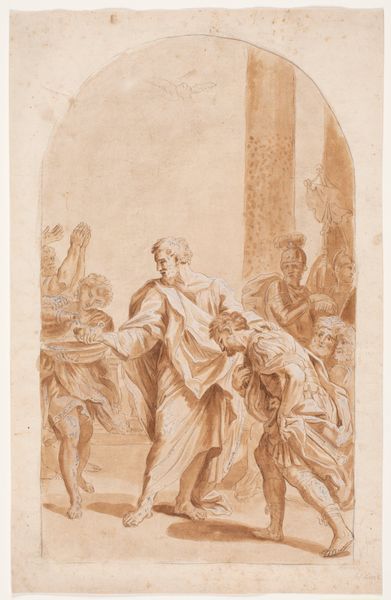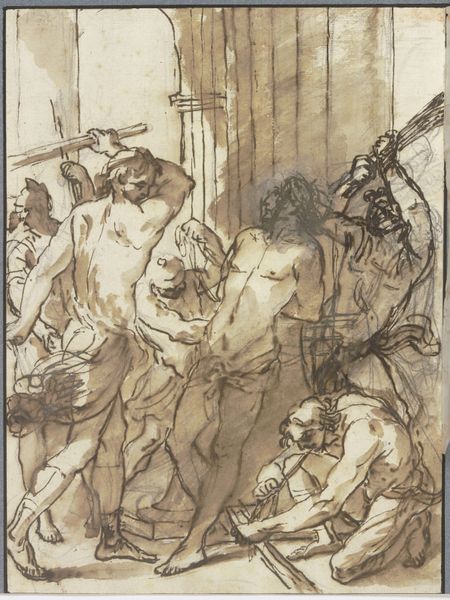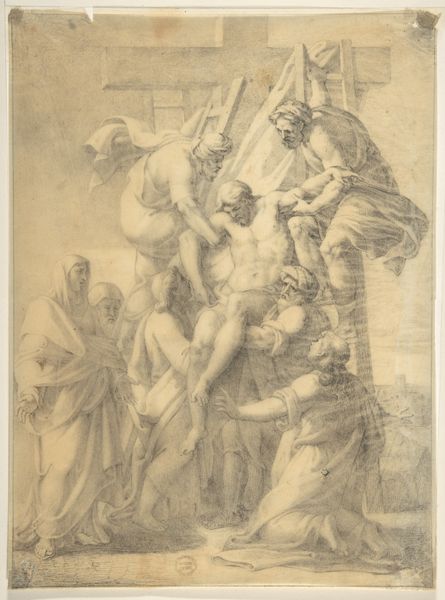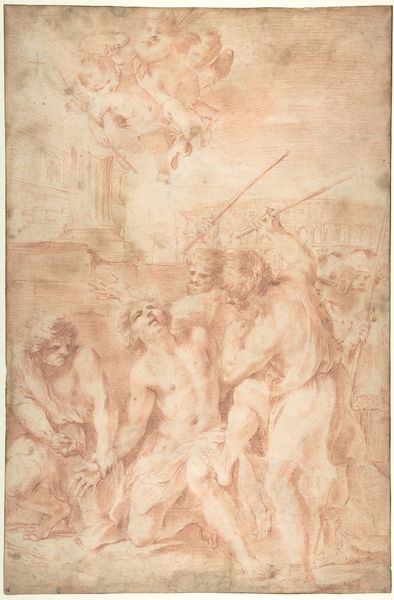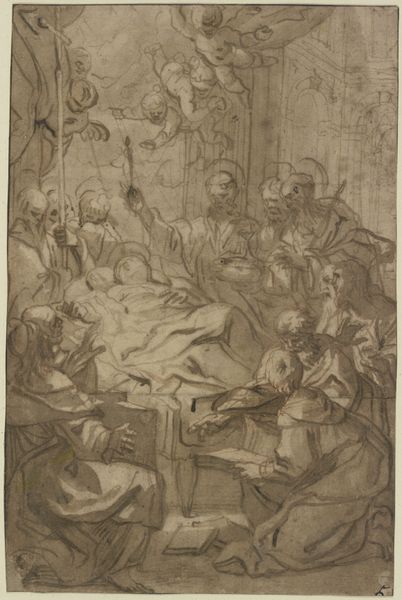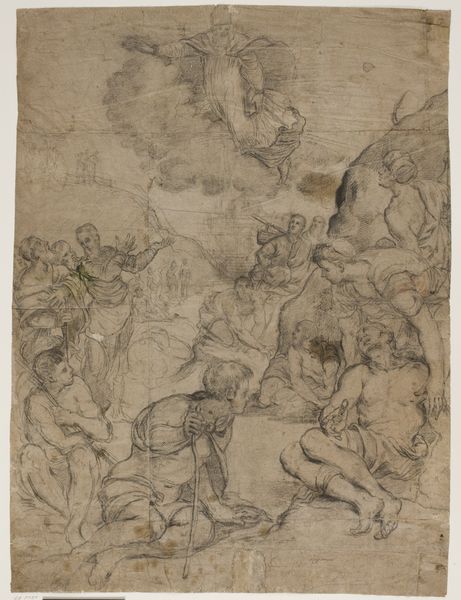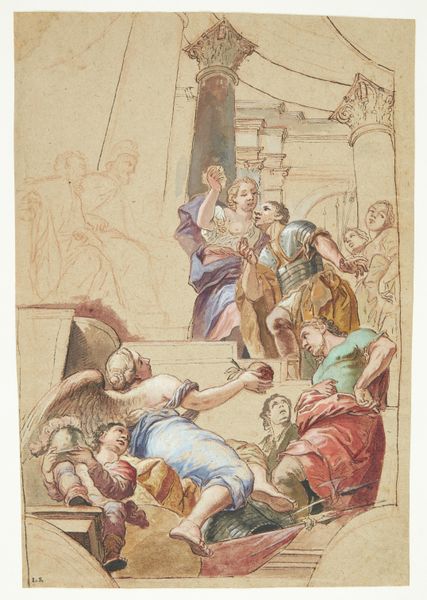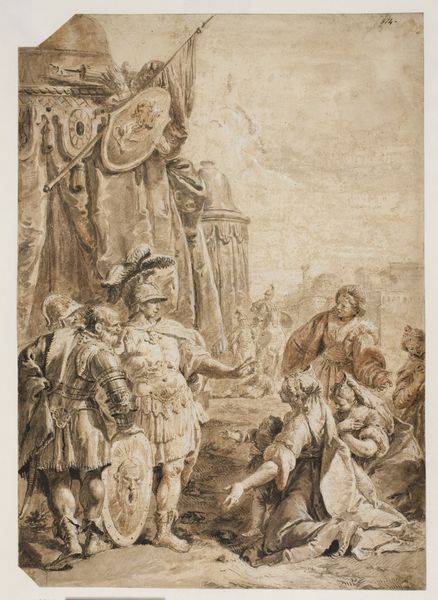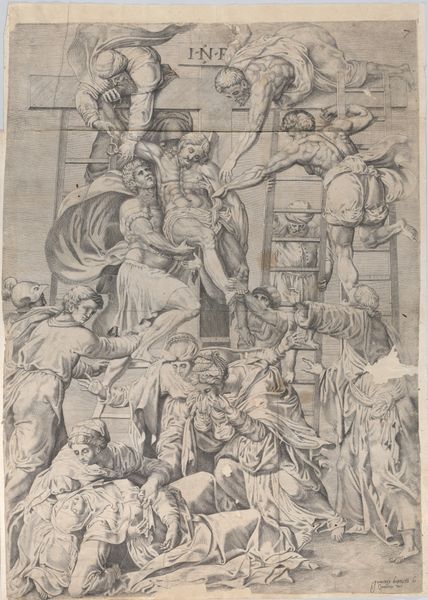
drawing, print, paper, ink, inorganic-material, chalk, charcoal
#
drawing
#
narrative-art
# print
#
figuration
#
paper
#
11_renaissance
#
charcoal art
#
oil painting
#
ink
#
inorganic-material
#
chalk
#
watercolour illustration
#
charcoal
#
history-painting
#
academic-art
Dimensions: 344 × 236 mm
Copyright: Public Domain
Curator: The first thing that strikes me about this piece, "Martyrdom of a Saint," is its incompleteness. It feels…raw, like a glimpse into a process. The medium of ink, chalk and charcoal gives it such interesting energy. What’s your take on this historical narrative as it appears here? Editor: I'm struck by the gridded under-drawing—we are quite literally looking at the construction of power and the brutal violence enacted to uphold it. Knowing this drawing, from 1626-1632, comes from the Workshop of Vicencio Carducho, places it within a highly specific historical and religious context, one defined by the Counter-Reformation and the visual rhetoric of martyrdom. Curator: Exactly. It’s like witnessing a choreography of death being mapped out. Carducho—or his workshop anyway—aren’t shying away from the visceral impact of the moment, though. The executioners with their axes and hammers… their actions speak volumes, more like how fear becomes materialized. Editor: Precisely. And who is centered in the frame? A saint in the throes of execution, eyes uplifted, hands raised in supplication. We need to unpack this portrayal of saintly suffering, right? It’s about power but also, it’s intended to stir very specific emotions in the viewer. We are positioned to see him as an icon in the making. The angel shapes confirm his ascension while still alive on this canvas. Curator: You can feel the intended manipulation, can’t you? It's supposed to draw us into an emotional relationship with both the saint's suffering and with a larger picture about piety in general. Is it meant to remind the viewer that faithfulness can demand extreme measures? This form of storytelling aims straight at the heart, attempting to get you feeling things you might never express. It uses that as a form of devotion! Editor: Absolutely. By emphasizing this theatrical, overwrought suffering, the artist isn't merely depicting an event, he's also actively participating in a kind of theological project: attempting to secure our allegiance. How successful this type of religious art can be is open to constant reinterpretation, right? Curator: Totally agree, but looking at the piece now, I see a real, living attempt to come closer to some notion of human and even a shared devotional history! Editor: Right, this pushes the piece into conversation in new ways. By framing this piece with a renewed sense of social responsibility and creative interpretation, the artwork offers us a mirror reflecting both past oppressions and present possibilities.
Comments
No comments
Be the first to comment and join the conversation on the ultimate creative platform.

